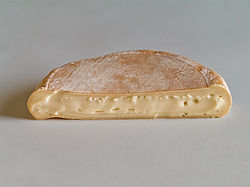I really have no idea what sustainable means.
But, as explained by Rachel Feltman of Quartz, France has announced its plan to cut food waste, and one of it targets is sell-by dates found on  packages, which tend to be overly cautious and poorly communicated.
packages, which tend to be overly cautious and poorly communicated.
The move by Food and Agriculture Minister Guillaume Garot is part of in an effort to comply with a European Union initiative to halve food waste by 2025. France currently throws away an average of 20 kilograms of food each year per capita.
A key problem with sell-by dates is that consumers often don’t understand what they mean. A 2012 paper in Food Engineering & Ingredients explains what’s flawed about the EU’s policies for stamping food with ‘use by’ dates for safety purposes and ‘best before’ dates for quality:
There is survey evidence that many consumers do not understand the difference between ‘use by’ and ‘best before’ dates. This has sometimes been exacerbated by the use of other date labels, such as ‘display until’ and ‘sell by’, which have no status in law and are mainly used by retailers for stock control purposes.
This confusion, the paper says, could lead to consumers eating foods that have become unsafe. But it’s more likely to lead consumers to throw out  food that’s still edible.
food that’s still edible.
A good example of a commonly mislabeled food is yogurt: Because it has a low pH and usually uses pasteurized milk as a base, yogurt is extremely unlikely to cause foodborne disease for some time past its expiration date, even when it’s past peak quality in terms of texture and taste. (A bulging package and visible mold are signs of yogurt spoilage—but absent them it’s generally safe to eat and usually still tasty up to 10 days after its sell-by date.)
But a 2010 retail survey by the anti-food-waste non-profit Waste and Resources Action Programme (WRAP) showed that 75% of yogurt in the EU carried a ‘use by’ date, which many consumers took to mean that the product would be unsafe to eat after only a week or two on the shelves.
The French government is likely to tweak labeling regulations so that safety periods more accurately reflect a product’s real shelf-life. For example, ‘best before’ will be replaced with ‘preferably to be consumed before.’ After that, hopefully consumers can figure it out themselves.


 a herd 21 dairy cows, and no other animal in the herd presented with symptoms suggesting brucellosis or showed any serological reaction. Approximately 20 kg of Reblochon cheese (soft raw milk cheese) are usually produced daily on the affected farm.
a herd 21 dairy cows, and no other animal in the herd presented with symptoms suggesting brucellosis or showed any serological reaction. Approximately 20 kg of Reblochon cheese (soft raw milk cheese) are usually produced daily on the affected farm. Consumers were asked to return the cheese.
Consumers were asked to return the cheese..jpeg) some hamburger
some hamburger(1).jpg) “gastroenteritis is seven days, it is only five,” and was sent home.
“gastroenteritis is seven days, it is only five,” and was sent home. evaluation points. “My team and I have been tested over an entire day,” explained the restaurateur. “It’s an extremely thorough evaluation that leaves nothing to chance in matters of hygiene and food quality. From maintenance of the kitchen up to the quality of referenced products and the state of the dining room. He added, “Nothing is possible without the willingness and training of the team. It’s a partnership.”
evaluation points. “My team and I have been tested over an entire day,” explained the restaurateur. “It’s an extremely thorough evaluation that leaves nothing to chance in matters of hygiene and food quality. From maintenance of the kitchen up to the quality of referenced products and the state of the dining room. He added, “Nothing is possible without the willingness and training of the team. It’s a partnership.”.jpg) fermented sorbitol, a rare characteristic for strains of E. coli O157 isolated in France.
fermented sorbitol, a rare characteristic for strains of E. coli O157 isolated in France. of animal origin: monitoring and evaluation contains 13 research papers.
of animal origin: monitoring and evaluation contains 13 research papers. strain isolated in the suspected food was performed as well as a traceability investigation.
strain isolated in the suspected food was performed as well as a traceability investigation.